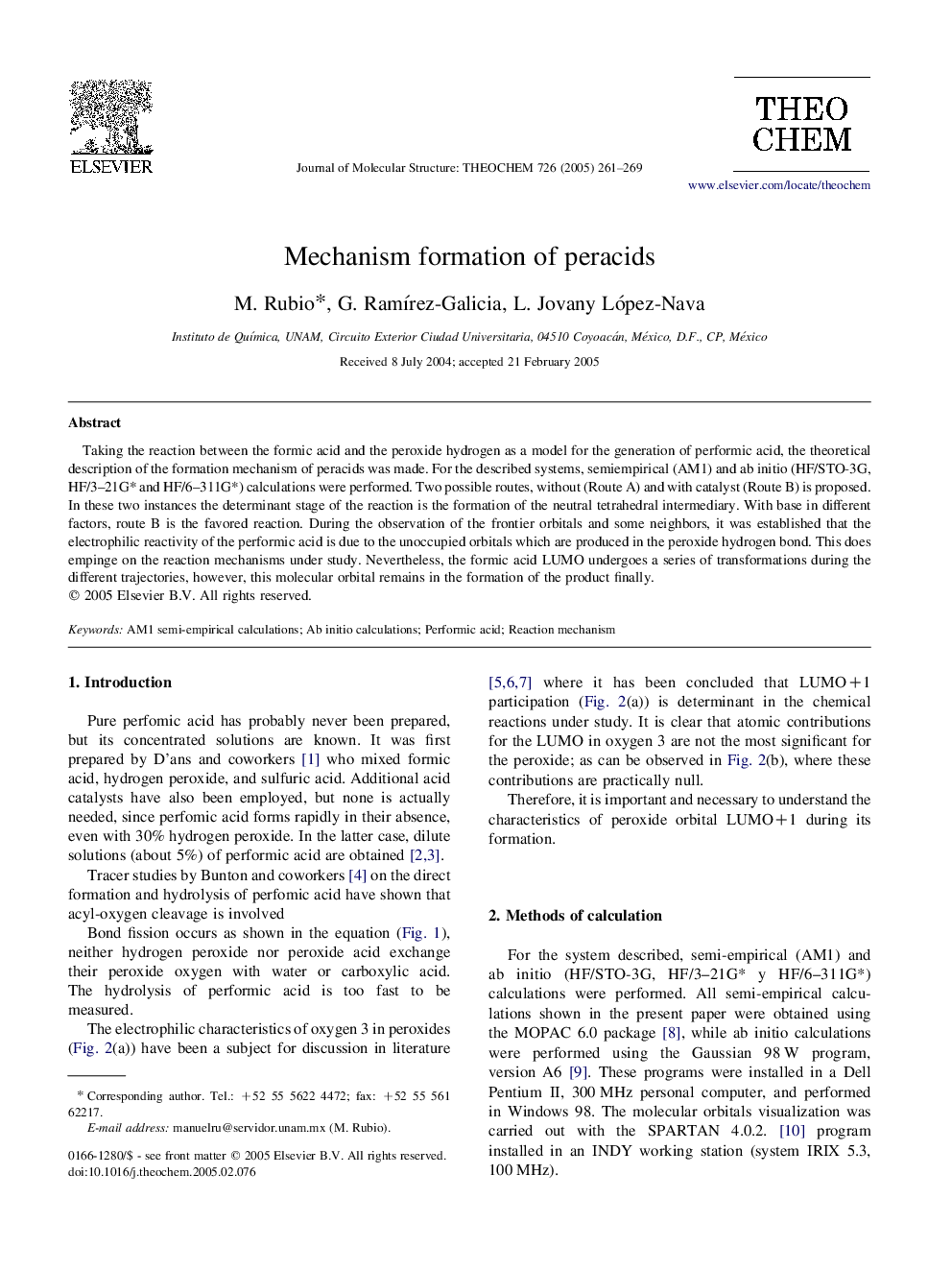| Article ID | Journal | Published Year | Pages | File Type |
|---|---|---|---|---|
| 9590679 | Journal of Molecular Structure: THEOCHEM | 2005 | 9 Pages |
Abstract
Taking the reaction between the formic acid and the peroxide hydrogen as a model for the generation of performic acid, the theoretical description of the formation mechanism of peracids was made. For the described systems, semiempirical (AM1) and ab initio (HF/STO-3G, HF/3-21G* and HF/6-311G*) calculations were performed. Two possible routes, without (Route A) and with catalyst (Route B) is proposed. In these two instances the determinant stage of the reaction is the formation of the neutral tetrahedral intermediary. With base in different factors, route B is the favored reaction. During the observation of the frontier orbitals and some neighbors, it was established that the electrophilic reactivity of the performic acid is due to the unoccupied orbitals which are produced in the peroxide hydrogen bond. This does empinge on the reaction mechanisms under study. Nevertheless, the formic acid LUMO undergoes a series of transformations during the different trajectories, however, this molecular orbital remains in the formation of the product finally.
Related Topics
Physical Sciences and Engineering
Chemistry
Physical and Theoretical Chemistry
Authors
M. Rubio, G. RamÃrez-Galicia, L. Jovany López-Nava,
